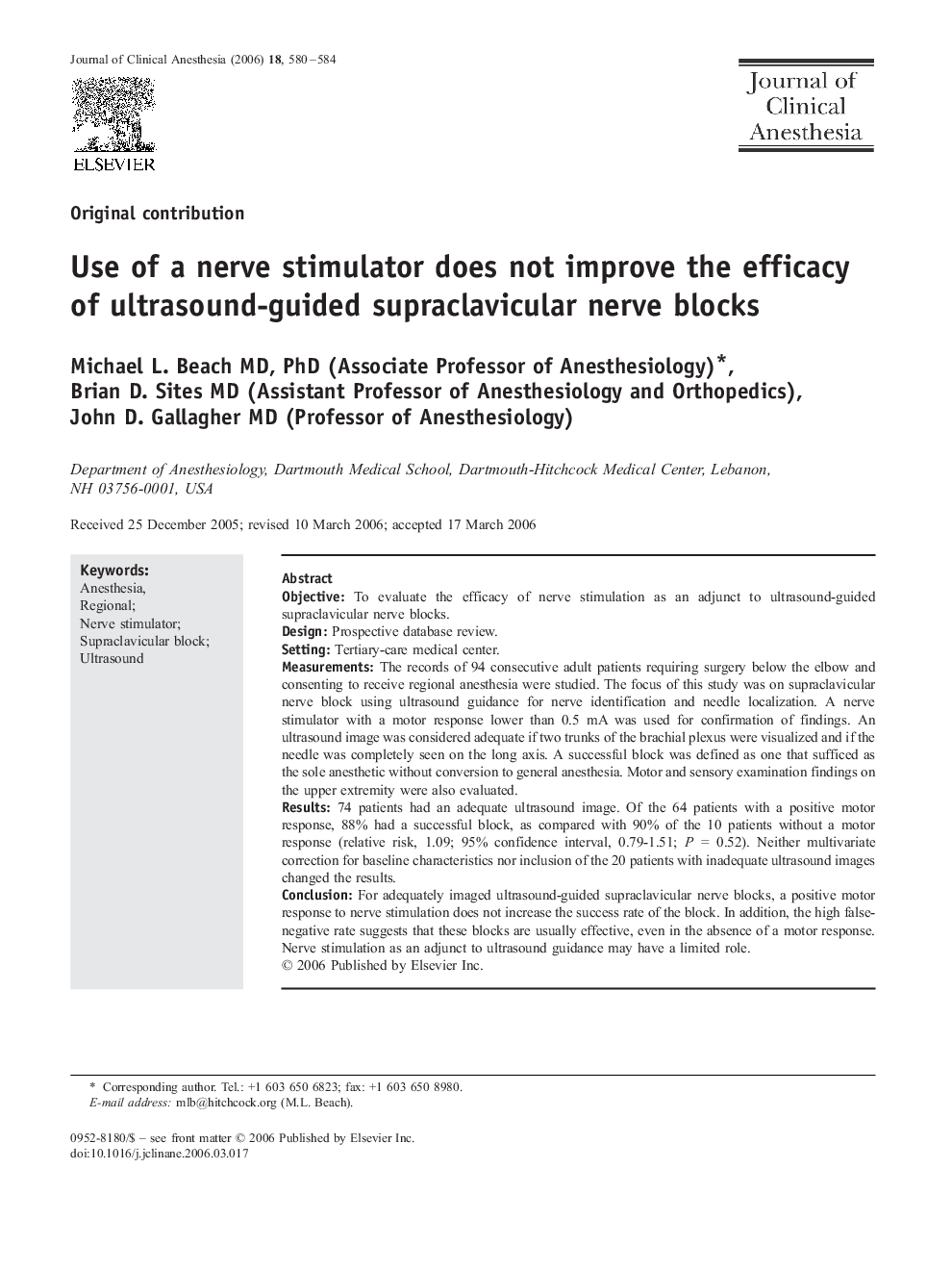| Article ID | Journal | Published Year | Pages | File Type |
|---|---|---|---|---|
| 2764111 | Journal of Clinical Anesthesia | 2006 | 5 Pages |
ObjectiveTo evaluate the efficacy of nerve stimulation as an adjunct to ultrasound-guided supraclavicular nerve blocks.DesignProspective database review.SettingTertiary-care medical center.MeasurementsThe records of 94 consecutive adult patients requiring surgery below the elbow and consenting to receive regional anesthesia were studied. The focus of this study was on supraclavicular nerve block using ultrasound guidance for nerve identification and needle localization. A nerve stimulator with a motor response lower than 0.5 mA was used for confirmation of findings. An ultrasound image was considered adequate if two trunks of the brachial plexus were visualized and if the needle was completely seen on the long axis. A successful block was defined as one that sufficed as the sole anesthetic without conversion to general anesthesia. Motor and sensory examination findings on the upper extremity were also evaluated.Results74 patients had an adequate ultrasound image. Of the 64 patients with a positive motor response, 88% had a successful block, as compared with 90% of the 10 patients without a motor response (relative risk, 1.09; 95% confidence interval, 0.79-1.51; P = 0.52). Neither multivariate correction for baseline characteristics nor inclusion of the 20 patients with inadequate ultrasound images changed the results.ConclusionFor adequately imaged ultrasound-guided supraclavicular nerve blocks, a positive motor response to nerve stimulation does not increase the success rate of the block. In addition, the high false-negative rate suggests that these blocks are usually effective, even in the absence of a motor response. Nerve stimulation as an adjunct to ultrasound guidance may have a limited role.
